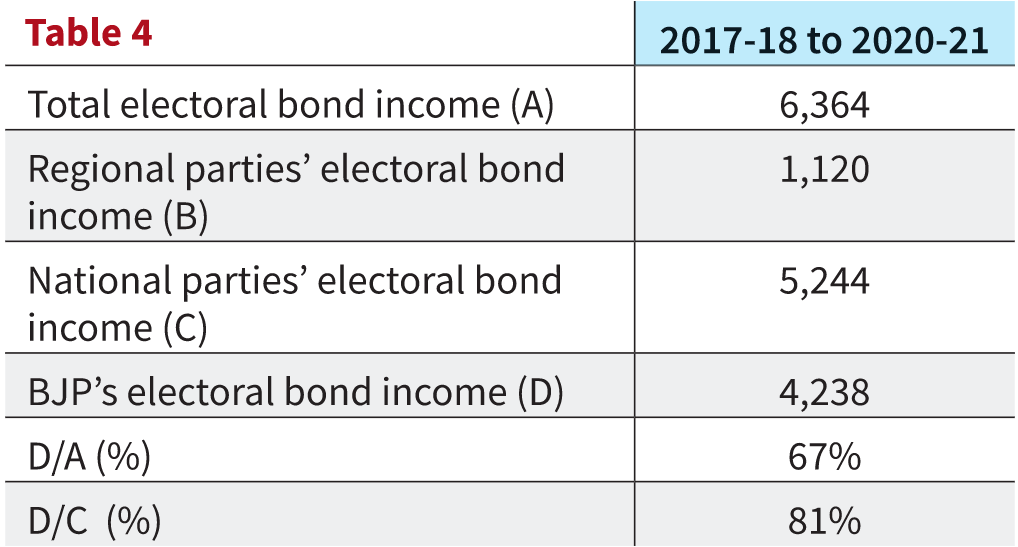The ADR classifies income of political parties into two major types — known and unknown. The known sources of income are further classified into two types — voluntary donations made above ₹20,000 whose donor details are submitted to the ECI and “other sources of known income” such as sale of movable and immoveable assets, etc.
National parties’ unknown income rose from 66% to 71% in the three years before and after the scheme’s introduction
Two developments have put the spotlight again on the controversial electoral bond scheme. On November 7, the Centre amended the scheme to allow an additional period of 15 days for electoral bond sales in years which have State elections. Whereas when it was introduced, these bonds were made available for a period of 10 days each in January, April, July and October with an exception in years with the Lok Sabha polls.
The unknown sources include donations below ₹20,000 via electoral bonds, sale of coupons, etc., for which the details of donors are not available for the public. An amendment to the Representation of the People Act by the Finance Act, 2017, created a provision to exempt parties from declaring funds collected using electoral bonds.
Table 1 shows that the share of such unknown sources of income for national parties increased from 66% between FY15 and FY17 to 71% between FY19 and FY21. The transition year FY18 was not considered for analysis. In the same period, the share of unknown sources of income increased from 55% to 68% for regional parties. The BJP’s share of unknown income increased from 58% to 68% in the period, while the Congress’ remained at around 80%.

Also, the electoral bonds’ share formed 57% and 64% of the national and regional parties’ total incomes in the FY19-FY21 period, respectively. So, the unknown share of income went up and electoral bonds were a major reason behind the rise. “Other known sources of income” was not considered while calculating total income in both periods as it is not dependent on donations.
Table 2 shows the split of various unknown sources of income to the national parties in ₹ crore. It shows that after the introduction of the scheme, the burden of unknown income has merely shifted from other routes such as donations below ₹20,000 and coupon sales to electoral bonds.

Meanwhile, the expenditures for elections and otherwise, have surged as shown in table 3. Both the BJP’s and the Congress’ election expenses increased by more than 60% between FY19 and FY21, as compared to FY15 and FY17

Table 4 shows that the BJP has cornered a lion’s share of the electoral bond income. The party received 67% of funds through electoral bonds by all parties between FY18 and FY21. If only national parties are considered, the share goes up to 81%.


